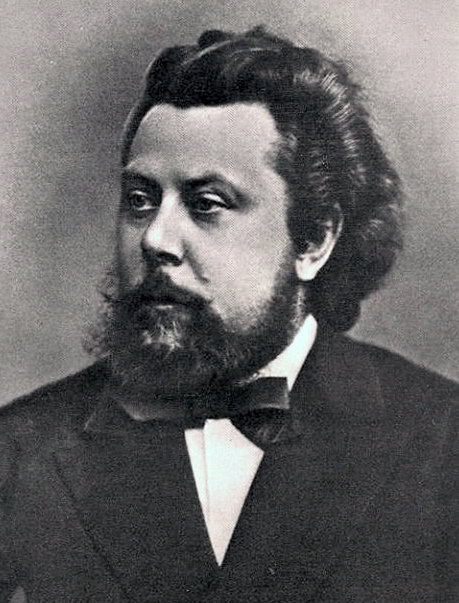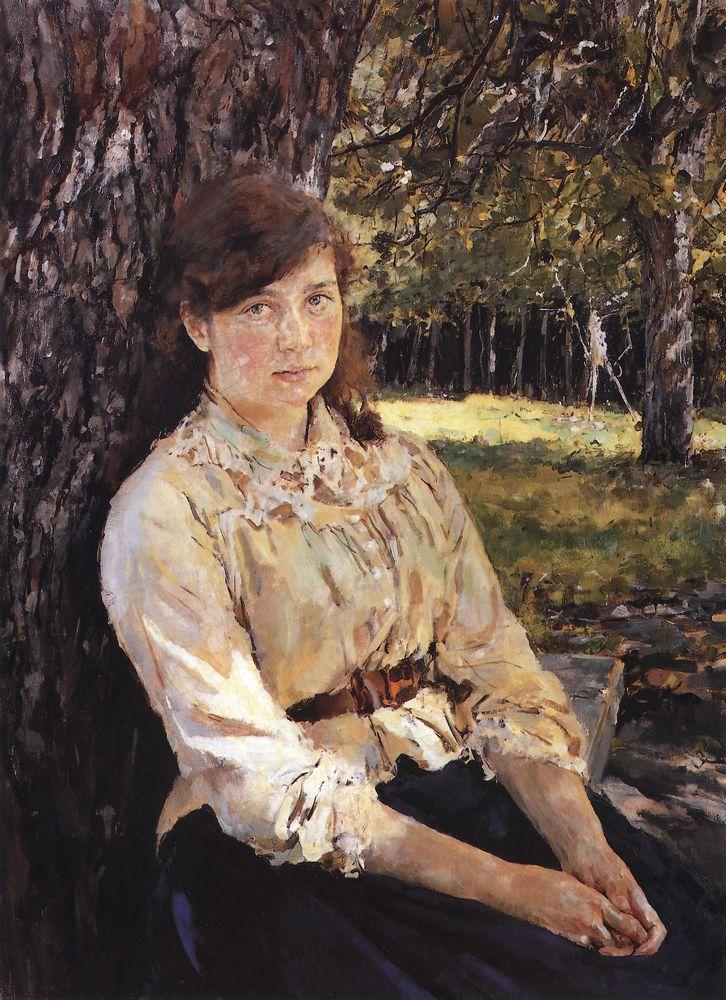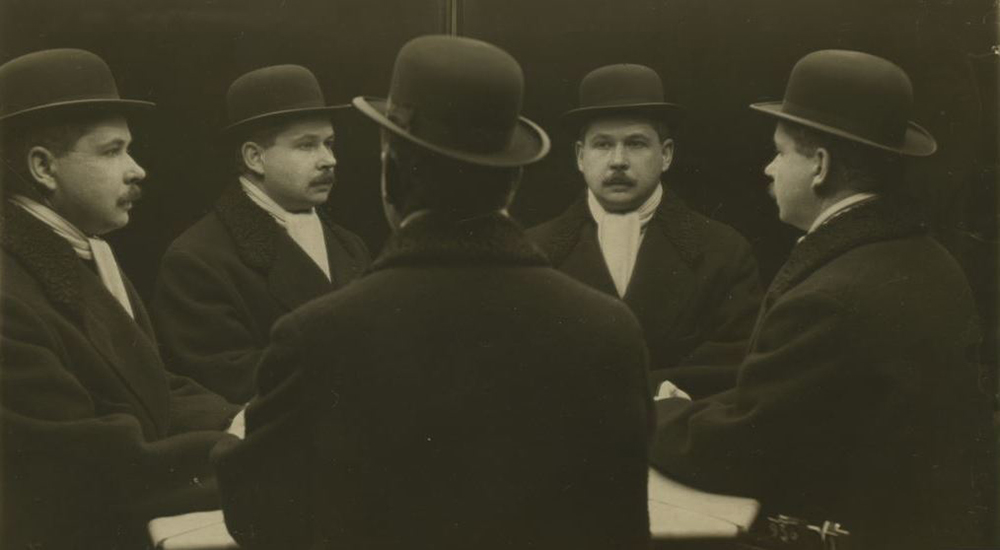|
Sergei Diaghilev
Sergei Pavlovich Diaghilev ( ; rus, Серге́й Па́влович Дя́гилев, , sʲɪˈrɡʲej ˈpavləvʲɪdʑ ˈdʲæɡʲɪlʲɪf; 19 August 1929), usually referred to outside Russia as Serge Diaghilev, was a Russian art critic, patron, ballet impresario and founder of the Ballets Russes, from which many famous dancers and Choreography, choreographers would arise. The active years of Diaghilev’s career can be divided into two periods: the one in St Petersburg (1898–1906) and the other in emigration (1906–1929). Biography Sergei Diaghilev was born in Chudovsky District, Selishchi to a noble officer . His mother died from childbed fever soon after his birth. In 1873, Pavel met and married Elena Panaeva, who loved Sergei and raised him as her own child. The in Perm, Russia, Perm was a local cultural centre, and the Diaghilevs housed a musical evening every second Thursday, Modest Mussorgsky being one of the most frequent guests. Sergei Diaghilev composed his ... [...More Info...] [...Related Items...] OR: [Wikipedia] [Google] [Baidu] |
Chudovsky District
Chudovsky District (russian: Чу́довский райо́н) is an administrativeLaw #559-OZ and municipalLaw #368-OZ district (raion), one of the administrative divisions of Novgorod Oblast, twenty-one in Novgorod Oblast, Russia. It is located in the north of the oblast and borders with Kirishsky District of Leningrad Oblast in the northeast, Malovishersky District in the southeast, Novgorodsky District in the southwest, and with Tosnensky District of Leningrad Oblast in the northwest. The area of the district is . Its administrative center is the types of inhabited localities in Russia, town of Chudovo, Chudovsky District, Novgorod Oblast, Chudovo. Population: 25,829 (Russian Census (2002), 2002 Census); The population of Chudovo accounts for 70.0% of the district's total population. Geography The district is located in the Ilmen Lowlands and is crossed by the Volkhov River from southwest to northeast, dividing the district into approximately equal areas. The highest point in ... [...More Info...] [...Related Items...] OR: [Wikipedia] [Google] [Baidu] |
Modest Mussorgsky
Modest Petrovich Mussorgsky ( rus, link=no, Модест Петрович Мусоргский, Modest Petrovich Musorgsky , mɐˈdɛst pʲɪˈtrovʲɪtɕ ˈmusərkskʲɪj, Ru-Modest Petrovich Mussorgsky version.ogg; – ) was a Russian composer, one of the group known as " The Five". He was an innovator of Russian music in the Romantic period. He strove to achieve a uniquely Russian musical identity, often in deliberate defiance of the established conventions of Western music. Many of his works were inspired by Russian history, Russian folklore, and other national themes. Such works include the opera '' Boris Godunov'', the orchestral tone poem '' Night on Bald Mountain'' and the piano suite '' Pictures at an Exhibition''. For many years, Mussorgsky's works were mainly known in versions revised or completed by other composers. Many of his most important compositions have posthumously come into their own in their original forms, and some of the original scores are now also ... [...More Info...] [...Related Items...] OR: [Wikipedia] [Google] [Baidu] |
Valentin Serov
Valentin Alexandrovich Serov (russian: Валенти́н Алекса́ндрович Серо́в; 19 January 1865 – 5 December 1911) was a Russian painter and one of the premier portrait artists of his era. Life and work Youth and education Serov was born in Saint Petersburg, son of the Russian composer and music critic Alexander Serov and his wife and former student Valentina Serova, also a composer in her own right. Raised in a highly artistic milieu he was encouraged to pursue his talents by his parents and in his childhood he studied in Paris and Moscow under Ilya Repin and in the St. Petersburg Academy of Arts (1880–1885) under Pavel Chistyakov. Serov's early creativity was sparked by the realistic art of Repin and strict pedagogical system of Chistyakov. Further influences on Serov were the old master paintings he viewed in the museums of Russia and Western Europe, friendships with Mikhail Vrubel and (later) Konstantin Korovin, and the creative atmosphere ... [...More Info...] [...Related Items...] OR: [Wikipedia] [Google] [Baidu] |
Mikhail Vrubel
Mikhail Aleksandrovich Vrubel (russian: Михаил Александрович Врубель; March 17, 1856 – April 14, 1910, all n.s.) was a Russian painter, draughtsman, and sculptor. A prolific and innovative master in various media such as painting, drawing, decorative sculpture, and theatrical art, Vrubel is generally characterized as one of the most important artists in Russian Symbolist tradition and a pioneering figure of Modernist art. In a 1990 biography of Vrubel, the Soviet art historian considered his life and art as a three-act drama with prologue and epilogue, while the transition between acts was rapid and unexpected. The "Prologue" refers to his earlier years of studying and choosing a career path. The "first act" peaked in the 1880s when Vrubel was studying at the Imperial Academy of Arts and then moved to Kiev to study Byzantine and Christian art. The "second act" corresponded to the so-called "Moscow period" that started with '' The Demon Seate ... [...More Info...] [...Related Items...] OR: [Wikipedia] [Google] [Baidu] |
Saint Petersburg Stieglitz State Academy Of Art And Design
The Saint Petersburg Stieglitz State Academy of Art and Design (Санкт-Петербургская художественно-промышленная академия имени А. Л. Штиглица; abbreviated as СПГХПА) is the oldest school of design in Russia. It occupies a parcel of land immediately to the east of the Summer Garden in Saint Petersburg. History It was set up in Saint Petersburg in 1876 by Baron Alexander von Stieglitz (1814–84), a millionaire philanthropist, as the School of Technical Drawing. The Stieglitz Museum of Applied Arts was founded in 1878 for the benefit of its students. The school building was designed by Maximilian Messmacher (the school's director, until 1896). By the end of the century, the Central School had branches in Yaroslavl, Saratov, and Narva. In 1945, by decision of the Soviet Government School of Technical Drawing, it was re-established as the College of Art and Design which provides training in the monumental ... [...More Info...] [...Related Items...] OR: [Wikipedia] [Google] [Baidu] |
Imperial Society For The Encouragement Of The Arts
The Imperial Society for the Encouragement of the Arts (Russian: Императорское общество поощрения художеств (ОПХ)) was an organization devoted to promoting the arts that existed in Saint Petersburg from 1820 to 1929. It was the oldest society of its kind in Russia. Until 1882 it was called the "Society for the Encouragement of Artists". After 1917, it became the "All-Russian Society for the Encouragement of the Arts". History The Society was founded by a group of influential patrons (including Ivan Alexeyevich Gagarin, Pyotr Andreyevich Kikin and Alexander Dmitriev-Mamonov) with the aim of assisting development in the fine arts, the diffusion of knowledge related to the arts, and the education of painters and sculptors.History of the Society @ the |
Léon Bakst
Léon Bakst (russian: Леон (Лев) Николаевич Бакст, Leon (Lev) Nikolaevich Bakst) – born as Leyb-Khaim Izrailevich (later Samoylovich) Rosenberg, Лейб-Хаим Израилевич (Самойлович) Розенберг (27 January (8 February) 1866 – 28 December 1924) was a Russian painter and scene and costume designer of Jewish origin. He was a member of the Sergei Diaghilev circle and the Ballets Russes, for which he designed exotic, richly coloured sets and costumes. He designed the décor for such productions as ''Carnaval'' (1910), ''Spectre de la rose'' (1911), ''Daphnis and Chloe'' (1912), ''The Sleeping Princess'' (1921) and others. Early life Leyb-Khaim Izrailevich (later Samoylovich) Rosenberg was born in Grodno, into a middle-class Jewish family. As his grandfather was an exceptional tailor, the Tsar gave him a very good position, and he had a huge and wonderful house in Saint Petersburg. Later, when Leyb's parents moved to the ca ... [...More Info...] [...Related Items...] OR: [Wikipedia] [Google] [Baidu] |
Konstantin Somov
Konstantin Andreyevich Somov (russian: Константин Андреевич Сомов; November 30, 1869 – May 6, 1939) was a Russian artist associated with the '' Mir iskusstva''. Biography Early life Konstantin Somov was born on November 30, 1869 in St. Petersburg. He was the second son of art historian and curator of the Hermitage Museum Andrei Somov. His mother, Nadezhda Konstantinovna, came from the noble family of the Lobanovs. She was well-educated and a musician. She instilled in her children a love of theater, music, and painting. The Somovs had a large private collection of old prints, paintings and drawings. Young Konstantin dreamed of becoming an artist from a very young age. For the first time Alexandre Benois met with Somov in the private gymnasium of Karl May. Dmitry Filosofov also studied there, and Somov found a common language and even became friends with him. Benois in his memoirs says that their manner of sticking together, but apart from every ... [...More Info...] [...Related Items...] OR: [Wikipedia] [Google] [Baidu] |
Walter Nouvel
Walter Feodorovich Nouvel (russian: Вальтер Федорович Нувель) (1871–1949) was a Russian émigré art-lover and writer. He co-wrote with Arnold Haskell a biography of Sergei Pavlovitch Diaghilev (''Diaghileff. His Artistic and Private life''), and was the ghost-writer of Igor Stravinsky's autobiography ''Chronique de ma Vie (Chronicle of my life)''. Nouvel fled the Soviet Union in 1919 and worked as secretary and factotum for Diaghilev's Ballets Russes The Ballets Russes () was an itinerant ballet company begun in Paris that performed between 1909 and 1929 throughout Europe and on tours to North and South America. The company never performed in Russia, where the Russian Revolution, Revolution .... Literature: Zil'bershtein, I.S. and V.A. Samkov, eds. Sergei Diagilev i russkoe iskusstvo, 2.vols. Moscow: Iskusstvo 1982. vol. 2, pp. 342–343. References 1871 births 1949 deaths {{Russia-writer-stub ... [...More Info...] [...Related Items...] OR: [Wikipedia] [Google] [Baidu] |
Alexandre Benois
Alexandre Nikolayevich Benois (russian: Алекса́ндр Никола́евич Бенуа́, also spelled Alexander Benois; ,Salmina-Haskell, Larissa. ''Russian Paintings and Drawings in the Ashmolean Museum''. pp. 15, 23-24. Published by Ashmolean Museum, 1989 Saint Petersburg9 February 1960, Paris) was a Russian artist, art critic, historian, preservationist and founding member of '' Mir iskusstva'' (World of Art), an art movement and magazine.Owen, Bobbi. ''Costume Design on Broadway: Designers and Their Credits, 1915-1985''. p. 19 Greenwood Press: New York, 1987 As a designer for the Ballets Russes under Sergei Diaghilev, Benois exerted what is considered a seminal influence on the modern ballet and stage design. Early life and education Alexandre was born into the artistic and intellectual Benois family, prominent members of the 19th- and early 20th-century Russian intelligentsia. His mother Camilla (Russian: Камилла Альбертовна Кавос, and the ... [...More Info...] [...Related Items...] OR: [Wikipedia] [Google] [Baidu] |
Nevsky Pickwickians
The Nevsky Pickwickians was an informal circle of art-loving and intellectual friends who were students at the University of St. Petersburg, Russia at the end of the 19th century. The group originally included Alexandre Benois (effectively its leader), Léon Bakst, Walter Nouvel, Dmitry Filosofov and Konstantin Somov. In 1890, Filosofov introduced his cousin Serge Diaghilev to the group. Although at first the older members considered Diaghilev to be provincial, he quickly learned from the other members (especially Benois), and eventually displayed his innate talent for organization and administration.Walsh (1999), p. 129. In 1898, members of The Nevsky Pickwickians founded the journal ''Mir iskusstva'' (''World of Art'') with financial backing of Princess Maria Tenisheva and Savva Mamontov. Diaghilev went on to become the impresario of the Ballets Russes The Ballets Russes () was an itinerant ballet company begun in Paris that performed between 1909 and 1929 throughout ... [...More Info...] [...Related Items...] OR: [Wikipedia] [Google] [Baidu] |
_ritratto_da_Valentin_Aleksandrovich_Serov.jpg)








.jpg)
